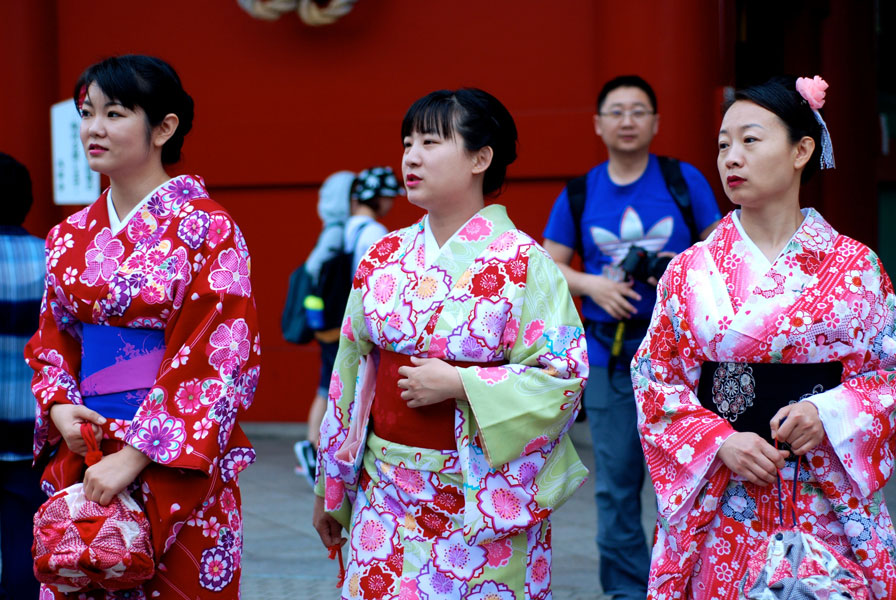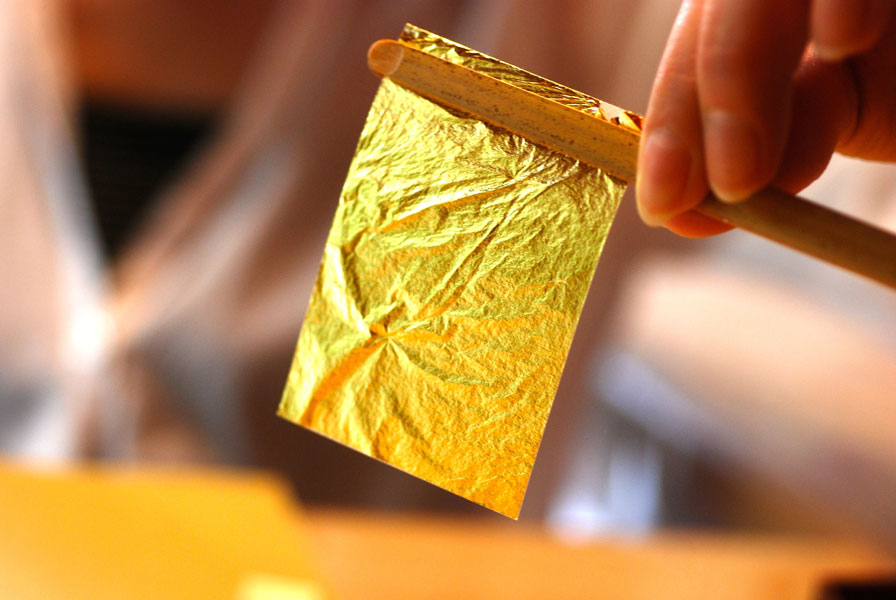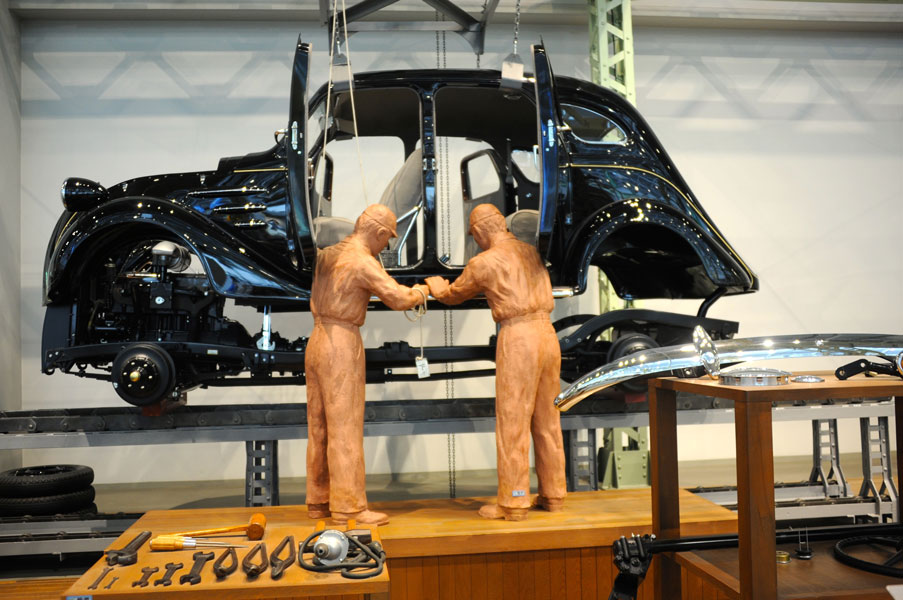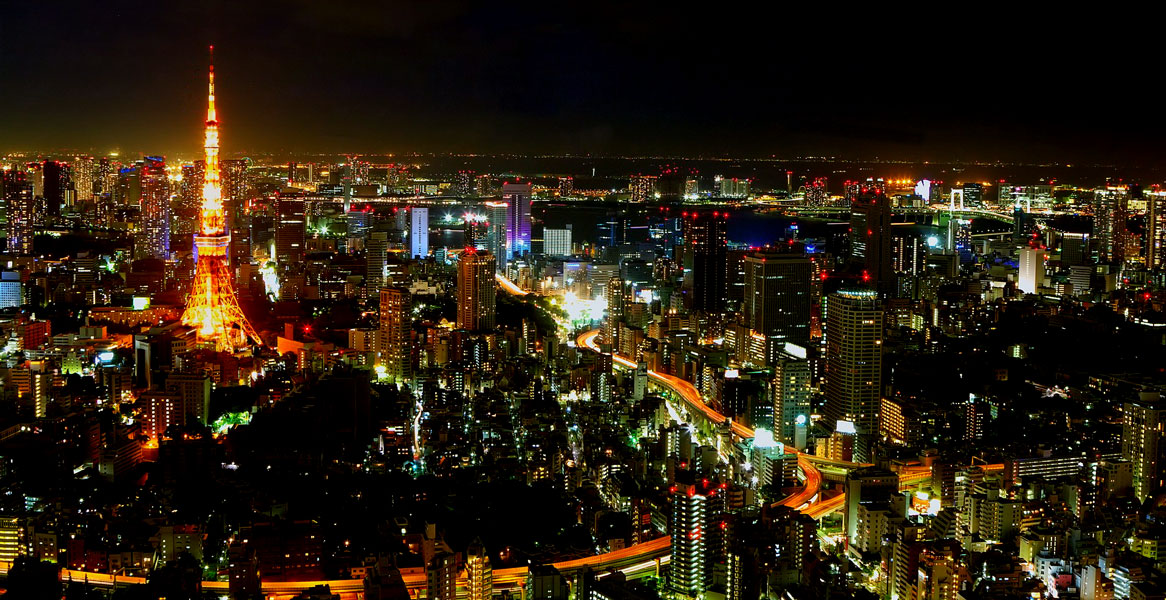
I had thought, well, one can only wear gold, gape at the cherry blossoms. Or lean on a magnolia. Find a spirit in a shrine. Or, climb up high walls made of cement. Not really. As I trudged through Japan, the Land of the Rising Sun, one by one, these tired clichés fell by the tidy sidewalks. In Japan, I could sprinkle gold flakes in my coffee and quaff it. Have my smoked salmon clad in sakura (cherry tree) leaves. Put a drop of miso paste and slow cook vegetables on a magnolia leaf. Normally, the gods live in shrines, but in Japan I learnt that 88 spirits live in one grain of rice. The brown tree, the gurgling river, the dark cloud — everything has a spirit and should be respected.
And the walls? Not all of brick. There’s an 8-metre high snow wall, where you can make a snowman, or write your name in snow. In this land, clichés are ignored, the obvious is spurned and life and things acquire fascinating nuances.
In Kanazawa, you can find gold leaves so thick that even one strand of human hair seems obese.
The gold leaf, first. In Kanazawa, where the strapping samurais lived, the sound of hammers pounding gold sheets resonates in the air. Gold sheets beaten to 1/10,000th of a mm. Gold leaves so thin that even one strand of human hair would seem obese. Sitting on a tatami mat in Kanazawa Katani, I try my hands at art that began in the 16th century and today accounts for 99 per cent of Japan’s domestic gold leaf production. Gold leaf glued on lacquered boxes, slathered on the face for a golden glow, added to a candy, spread over a raisin cake. And yes, the famous Kanazawa ice cream cones laden with gold sparkles.

Gold galore
In Kanazawa, I see more gold, including a storehouse with gold leaf walls. In Higashi Chaya, now designated Japan’s cultural asset, latticed two-storeyed houses previously served as places of feasts and entertainment, where geisha girls entertained people by performing dances and playing traditional musical instruments. Most of these houses have now metamorphosed into tea rooms or boutique stores, including the one with a golden storehouse. There’s gold everywhere — gold thread turned into coasters, gold dust floating lazily in bottles of sake (Japanese rice brew); gold woven into silk; gold necklaces.
Never waste a grain of rice because 88 spirits live in every grain.
Can you imagine, gold is also used to fix broken pottery; Kintsugi is the Japanese art for doing this. It is meant to embrace imperfections and treat breakage/repair as part of an object’s beautiful history instead of disguising it.
Healthy food
From art to food, I partake in Washoku, traditional Japanese food, which has been added in the UNESCO Intangible Cultural Heritage list. Before picking up the chopstick, I muse on the thought… never waste a grain of rice because 88 spirits live in every grain. Some tips on how to eat Japanese food… The rice on the left, miso soup on the right and side dishes beyond. Drink the miso soup from the bowl. Slurping noodles is not bad manners. Eat sushi in one bite. Do not pour soy sauce over white cooked rice. At the end of the meal, return the dishes to how they were at the start of the meal. And say “gochisosma,” to express gratitude for the meal.
Each of us had our own personal stove on the table, topped with magnolia leaf on which mushrooms and vegetables were simmering with a dash of miso. On the low table lay a traditional Japanese meal — sushi, sashimi, yakitori, udon noodles, a bowl of rice, wasabi paste, tempura and sukiyaki. Small morsels neatly stacked in ceramic bowls with a pair of chopsticks. That day in Takayama, a mighty meat-myth was dispelled — Japan has enough fare for vegetarians. Even vegans. If Japanese cuisine is not your food for soul, there are countless Indian restaurants all across the country. Stirring the vegetables on a burning stove, I realise how healthy the Japanese cuisine is. The standard meal of rice and Ichijusansai (soup, main dish + two side dishes) has the perfect nutritional balance.
Washoku, traditional Japanese food, has been added in the UNESCO Intangible Cultural Heritage list.
With all the food down my gullet, I had to shed calories. I headed to the 56-mile long Tateyama-Kurobe Alpine Route. Also known as Roof of Japan, the route is not merely about snow and the surreal landscape, it is about the journey that includes seven different public transports with five modes — funicular, bus, trolleybus, aerial tramway and walking. The biggest attraction of this mountain sight-seeing route is Yukino-Otani, the man-made snow wall that is open only in summer. Gigantic machines expel snow near the Murodo Terminal to create the walls that are sometimes higher than 20 metres.
Snowtime
The walk is barely 500-metres but the thrill of moseying through a silvery snow corridor is unmatched. In the Snow Play Area, snowmen stand tall and on a stick hang plastic flat buckets to hurtle down the steep slopes. When the knees turn wobbly and the fingers freeze in the cold, head back to the wooden rest/restaurant area where the aroma of freshly steamed yam, wasabi crackers and warm sake can drive away shivers from every sinew. Keep an eye out for the ptarmigan, a rare snow goose that has made Tateyama its home.

I returned to Tokyo and whooshed up Skytree, the world’s highest lookout. The service elevator that races 600 metres per minute took barely a few seconds to open into the Tembo Deck that sits 350 metres above ground zero. I peered out of a 5-metre high glass and Tokyo’s skyline unfolded in a panoramic view. I wanted to walk in the sky but I am no Spiderwoman to scale up the tower. So instead I spiralled up Tembo Gallery ramp that gains height as it circles the tower. That’s the world’s highest skywalk. High up in the sky, I found a cheeky sign: World’s Highest Toilet.
Pictures by Preeti Verma Lal
Did you know?
- Japan has the highest density of robots in the world — roughly 1 robot for every 310 people.
- There are 5 million vending machines (jidohanbaiki) in Japan. That’s one for every 25 people.
- The first Japanese novel, The Tale of Genji, was written by a Japanese noblewoman, Murasaki Shikibu, in 1007.
- In Japanese, karaoke means ‘empty orchestra.’
- Japan boasts the longest-reigning monarchy in the world.
- The fortune cookie dates back to the 19th century and was first made in Kyoto, Japan.
- Instant noodles were invented in 1958 by Momofuku Ando, a Japanese.
- February 22 is the National Ninja Day.






